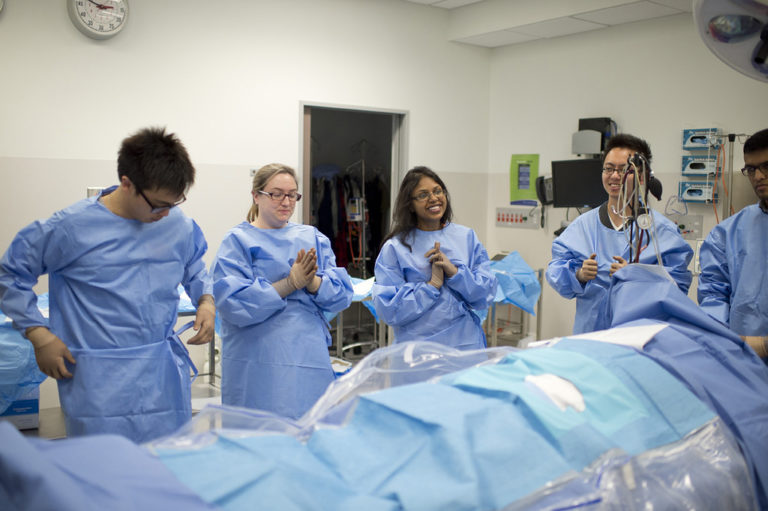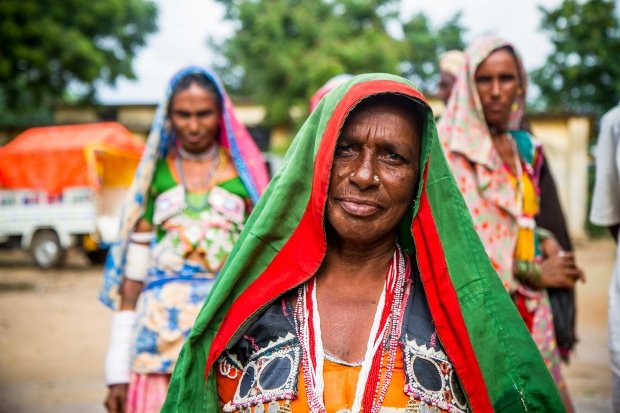The COVID-19 pandemic has highlighted the vital role of healthcare systems. Looking beyond the current crisis, health professionals will need to be better prepared to move into a new world order. What will be needed to make their education more effective is explored in this article. Based on extensive practical experience in many universities around the world, there are three main components to improve the formation of health professionals:
- clear pathways for clinical education;
- extensive and appropriate use of simulation; and
- robust assessment tools.
The main outcome would be a “practice-ready health professional.” Let’s look at this proposal in detail.
Global Situation and Prospects
The world faces a shortage of more than 7 million skilled health professionals today, with that number expected to grow to almost 13 million by 2035. Already, one billion people lack access to a trained health care worker—a problem that does not just affect the developing world. The United States, for example, faces a shortage of doctors that the Association of American Medical Colleges estimates could reach 122,000 in the next dozen years, driven by population growth, longer lifespans, and the high prevalence of non-communicable diseases like diabetes and heart disease.
Of course, COVID-19 has only underscored the vital role of healthcare systems, and how a shortage of trained professionals can bring entire countries to their knees.
The pandemic has also shown that quality education for the health workforce is of critical importance. For example, even when health professionals had access to adequate personal protective equipment during the early days of the pandemic, many did not know how to use equipment properly and thus were exposed to the virus anyhow.
More broadly, issues with diagnostic and treatment accuracy, increased digitalization in healthcare, and an insufficient focus on the role that behavioral, social, and environmental issues have on our health creates a quality gap in health professions education that is as dramatic as the shortages.
While the pandemic is far from over, and a second wave appears to be hitting many countries, we should nevertheless take a step back and assess what comes next, after this crisis becomes more manageable. It is clear that we must focus on how educational programs for health professionals can evolve to close the quality gap—and do so quickly, given the pressing demand.
How to Ensure Health Professionals Are Practice-ready
Two key questions emerge: What kind of doctors, nurses, and health professionals do we want and need? And how do we ensure that they are “practice-ready” – able to step up to today’s challenges immediately?
We need recent graduates from medicine, dentistry, nursing, and all other health professions—although not yet experts—to be able to safely provide care to patients and understand their disease, covering 80% or more of their health needs and referring them to specialists, or other health professionals when needed.
Achieving that standard of “practice-ready,” however, is complex.
More than a decade of experience operating medical and other health sciences schools in 18 countries around the world has led me to a framework for understanding this challenge. I was responsible for opening 19 new medical schools, and oversaw 22 dental, 26 human medicine, and 17 veterinary medicine programs, along with many other schools for health professions serving 250,000 students, from technical to doctoral levels.

With our academic teams, including at Cintana Education where I work now, we learned that to train practice-ready health professionals, education programs must focus on three main components: (i) clear pathways for clinical education built into the curriculum; (ii) extensive and appropriate use of simulation; and (iii) robust assessment.
Clear pathways for clinical education: We need learning pathways that introduce clinical experiences early and layer them throughout the curriculum, gradually building students’ competence and confidence. Clinical learning must be objectively described and sequenced semester by semester. It requires a focus not only on separate tasks and clinical abilities but also on the assessment and treatment of patients with complex needs and a good understanding of health determinants.
A first-year medical student, for example, could be asked to visit a patient at home and complete an interview—an experience that not only builds communication skills, but also helps the student understand the family, home, and community conditions that affect the patient’s health. A last-year student could do an intensive rotation in an acute care setting, assessing and recommending treatments for patients with complex issues.
Extensive and appropriate use of simulation: Simulation exposes students, in a safe, controlled learning environment, to what they will find in clinical practice when they graduate, helping them to become more proficient and confident.
Quality simulation goes beyond examining standardized patients or repeating isolated procedures in robotic mannequins. While those traditional approaches are valuable, simulation is more powerful when it reflects the more complex realities students are likely to encounter during practice and incorporate skills from across the health professions.
Institutions should provide students with immersive laboratories equipped with tools like virtual anatomy, surface anatomy and body painting stations, multi-sensorial technologies, and other innovations that provide a diversity of resources aimed to build an emotional connection to learning experiences.
They should also have a variety of simulated clinical environments. For example, students access a fully simulated hospital ward, with 12 admitted patients. Some are standardized patients acting in controlled disease states, some are complex robotic simulators, and still others are prepared patients showing conditions that require students to engage in family interactions around discharge.
Students would feel like they are in a real hospital, interacting with classmates from medicine, pharmacy, nursing, psychology, social work, and others. After these sessions, students reflect on what they experienced and learned with the support of trained faculty.
This kind of teaching not only develops skills and increases knowledge, but also builds the behaviors and values that we want in our doctors, nurses, psychologists, nutritionists, and other health professionals. Values such as compassion, empathy, humility, honesty, self-care, and curiosity are all needed and can be learned, initially, with simulated scenarios.
Robust assessment tools: Education programs increasingly can—and should—draw on a set of evaluation tools that clearly define and measure competence in specific clinical activities.
While these tools are still improving, they can help programs better understand when a practitioner can be trusted to perform an activity first with supervision and then without. Such tools not only let instructors and supervisors know when a student is ready to perform a task with a patient as safely and as accurately as possible, but also can identify specific areas that need additional reinforcement and practice.
Testing is essential throughout the curriculum, after simulations, and after real patient encounters.
Other challenges remain, of course, but these three approaches would go far in creating the kind of immersive learning experiences that help students thrive and develop into professionals who are truly practice-ready. Whether in Brazil, Spain, Costa Rica, or the United States, I’ve seen firsthand how well this approach works.
We must move beyond the status quo in medical and health professions education. The future of practice and of our collective health depends on it.
Editor’s Note: The opinions expressed here by Impakter.com contributors are their own, not those of Impakter.com
Featured Image: Young woman doctor with stethoscope at hospital (February 2020) Source:










